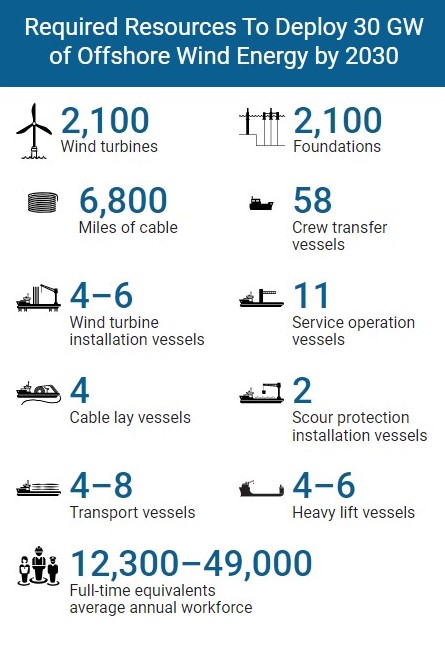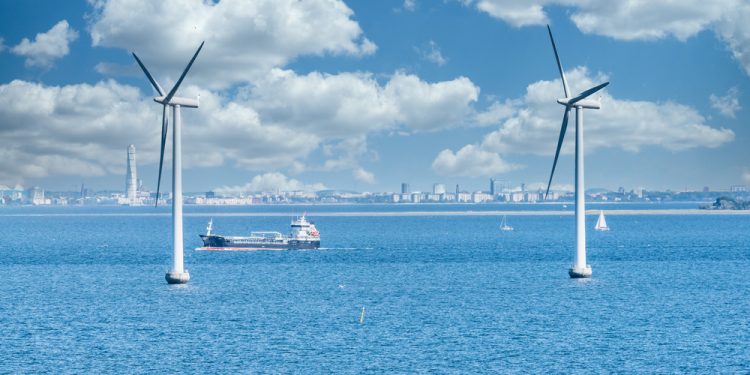The National Offshore Wind Research and Development Consortium (NOWRDC) released a report identifying how the United States can develop a robust and equitable domestic supply chain required to achieve the national offshore wind target of 30 gigawatts (GW) by 2030.
Key findings include:
- Deploying 30 GW by 2030 will require at least 2,100 wind turbines and foundations along with a significant number of supporting system components, vessels, and workforce.
- Existing international manufacturing facilities likely will not have sufficient capacity to provide components for the United States and global demand, which could create bottlenecks without a domestic supply chain.
- New/expanded ports and new vessels are required to alleviate the risks of missing the national offshore wind energy target.
NREL led the “30 GW by 2030: A Supply Chain Road Map for Offshore Wind in the United States” project to create a road map that identifies challenges and solutions to developing a nationally focused offshore wind energy supply chain that has the potential to manufacture all major components domestically by 2030.
Short-term actions to build a strong foundation (2023-2024)
To build a strong supply chain foundation for the offshore wind energy industry, the country needs to:
- Convene working groups focused on regional and holistic supply chain development
- Identify locations to build the next wave of supply chain development equitably and efficiently
- Continue to expand the offshore wind energy pipeline
- Assess the need for and impact of incentive mechanisms beyond existing programs
- Establish strategies and incentive mechanisms targeted at floating wind infrastructure
- Establish curriculum and funding streams for workforce training centers
- Conduct outreach and education activities with existing suppliers to increase awareness of offshore wind energy opportunities.
Medium-term actions to build momentum (2025-2029)
To gain momentum with a smoothly running domestic supply chain for the offshore wind energy industry, the country needs to:
- Construct the major supply chain facilities needed to meet the demand pipeline
- Continue to expand the offshore wind energy pipeline
- Leverage national, regional, and industry working groups to share and develop best practices for supply chain activities
- Incorporate learning from early-stage commercial-scale projects into ongoing operations and decision-making
- Train a sufficient manufacturing workforce
- Evaluate procedural and impact equity metrics for early-stage commercial-scale projects and incorporate best practices into ongoing supply chain development activities.

Long-term maintenance actions to maintain industry sustainability (Beyond 2030)
To maintain the offshore wind energy industry with the U.S. supply chain, the country will need to:
- Maintain and upgrade key supply chain infrastructure to adapt to evolving technologies
- Expand supply chain infrastructure to new regions using lessons learned from early build-out
- Fill manufacturing gaps in supporting supply chains with domestic production
- Continue to expand the offshore wind energy pipeline.




























































